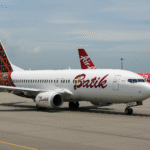Major traffic disruptions on the M11 motorway near London Stansted Airport on the morning of July 4, 2025, resulted in hours of delays after two serious road crashes near Junctions 8 and 9 brought both carriageways to a standstill. The incidents prompted a large-scale emergency response, caused widespread congestion, and reignited calls for stronger road safety measures and motorway infrastructure improvements.
Double Crash Causes Gridlock on a Key Airport Route
The M11—a key artery linking London and Cambridge—was plunged into gridlock during peak travel hours after two separate multi-vehicle collisions occurred in close succession. The first crash took place near Junction 8, the exit for Stansted Airport, while the second incident unfolded near Junction 9, further exacerbating the congestion and chaos.
Both directions of the motorway were closed for several hours as police, ambulance services, fire crews, and National Highways traffic officers worked at the scene. Emergency responders assisted those involved, cleared debris, and assessed road damage. While no fatalities were reported, several individuals sustained injuries and were treated at the scene or transported to nearby hospitals.
Traffic Tailbacks Stretch for Miles
The crash brought both the northbound and southbound routes to a crawl. Southbound traffic faced delays spanning up to five miles, while northbound tailbacks extended as far as seven miles, causing major disruption not only to airport-bound travelers but also to daily commuters using the M11.
According to National Highways and Essex County Council’s traffic management services, drivers reported being stuck in their vehicles for over three hours. Diversions through local roads like the A120 and A11 were introduced but quickly became congested due to the volume of displaced motorway traffic.
Travelers heading to London Stansted Airport experienced heightened anxiety, with some missing international flights. The airport issued alerts via social media, urging passengers to allow extra travel time and check for updates from their airlines.
Disruption Raises Safety and Infrastructure Concerns
The disruption underscored longstanding concerns about the resilience of key UK motorways and the adequacy of safety measures on routes serving major airports. As one of the busiest motorways in southeastern England, the M11 carries heavy traffic daily—serving local commuters, freight hauliers, and tourists en route to Stansted, London’s third-busiest airport.
Local MPs, including those representing Uttlesford and North Essex, reiterated calls for improved motorway design around Junctions 8 and 9, where previous collisions have also occurred. Safety campaigners have highlighted the need for upgraded signage, smart traffic monitoring systems, and better lane management, especially in accident-prone sections.
Government Response and Road Safety Initiatives
The Department for Transport (DfT) and National Highways have acknowledged the increasing frequency of disruptions on major arterial routes. In recent years, the UK government has introduced a £24 billion Road Investment Strategy to upgrade national infrastructure, including improvements to the M11 corridor.
However, critics argue that progress on M11 enhancements has been slow, and key junctions near the airport remain vulnerable to incidents that can paralyze traffic for hours. With record numbers of travelers expected to use London Stansted this summer, transport authorities face renewed pressure to prioritize M11 upgrades and enhance real-time response mechanisms.
Airport Accessibility and Emergency Contingency Planning
Stansted Airport has historically advocated for reliable and efficient surface transport links to support its growing passenger base. The airport, which serves over 28 million passengers annually, relies heavily on the M11 for road connectivity, making disruptions on the motorway a critical operational risk.
Greater London Authority and regional transport bodies have proposed expanding alternative transport options, including enhanced rail connectivity through the Stansted Express and long-term improvements to the A120–M11 interchange. Still, road access remains vital, and any prolonged disruption severely affects the airport’s accessibility.
In light of this incident, airport authorities have pledged to review their traffic coordination plans and communication protocols to minimize disruption for future travelers.
Commuters Left Frustrated by Long Delays
For the thousands of drivers stuck in the chaos, the event proved both stressful and costly. Commuters heading to work across Essex, Cambridgeshire, and Greater London saw their schedules upended. Delivery services and logistics companies also experienced delays in reaching their destinations.
Some commuters expressed frustration with the lack of timely updates and the limited capacity of alternate routes, calling for smarter diversion strategies and clearer motorway messaging. The ripple effect of the closure was felt on secondary routes across Bishop’s Stortford, Saffron Walden, and Harlow, which also became heavily congested.
Looking Ahead: Safer, Smarter Roads
The M11 disruption serves as a critical reminder of the UK’s need to strengthen motorway infrastructure in high-density travel zones, particularly those near airports. Key proposals include:
- Deployment of smart motorway technology to detect crashes earlier and implement dynamic lane management.
- Improved signage and lighting near exits and known hazard zones.
- Real-time communication between road operators and airports for early alerts.
- Resilient detour planning to prevent local road overloads.
Experts from the Road Safety Foundation and the RAC Foundation emphasize that investment in motorway safety and modernization will be key to preventing recurring incidents. With traffic levels expected to rise in 2025 and beyond, strategic planning will be essential to maintaining road safety and minimizing travel disruptions.
Conclusion
The July 4 crashes on the M11 near London Stansted Airport have triggered renewed public and governmental scrutiny into the reliability and safety of one of the UK’s most vital transport corridors. While emergency services acted swiftly, the long-lasting effects of the traffic jams serve as a sobering reminder of the vulnerability of key routes under pressure.
As traffic demand increases and infrastructure ages, sustained investment in smarter and safer roads will be crucial—not only for airport travelers but for the millions of people who depend on the M11 and similar routes every day.
For more travel news like this, keep reading Global Travel Wire






















